The term ‘luxury watch’ is commonly thrown around nowadays. It seems like a high price is enough reason for most to call a watch a luxury watch. But when is a watch actually a luxury watch?
A luxury watch is a watch that’s hand-assembled with high-end materials, contains an in-house-made movement, and comes at a high price. Luxury watches also tend to feature complications, and there’s a massive focus on quality, precision, and attention to detail.
What does and does not define a luxury watch is kind of a gray area. There are many different opinions out there, but some are more agreed upon than others. In this article, we’ll discuss the major guidelines a brand needs to follow to class their watches as luxury watches!
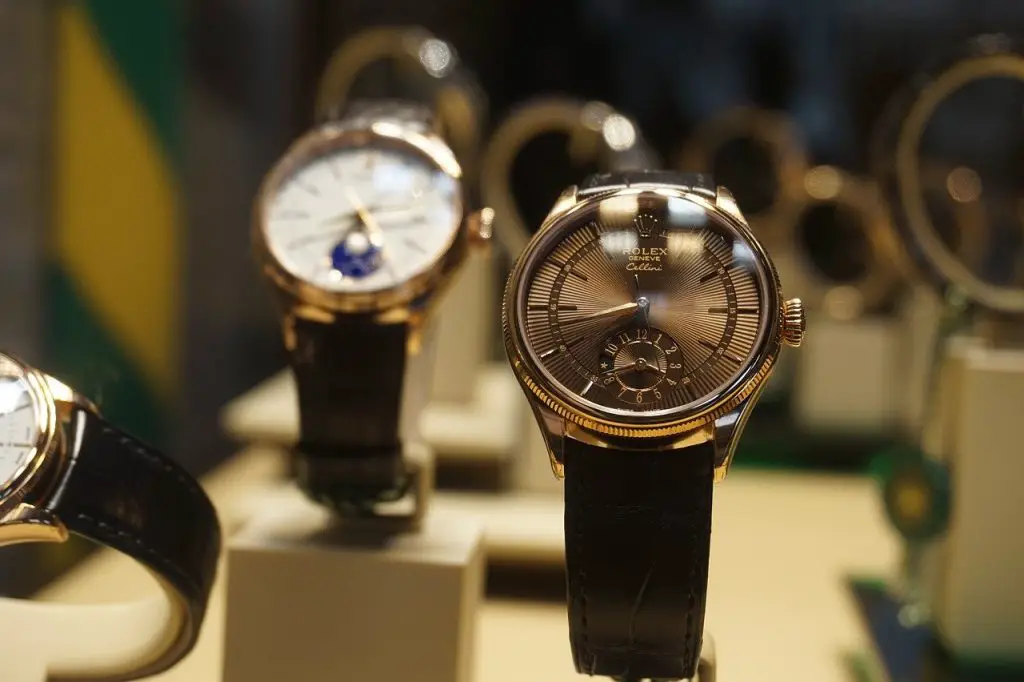
Table of Contents
What Defines If A Watch Is A Luxury Watch
There actually isn’t a clear-cut definition for what makes a watch a luxury watch. Luxury can have a different meaning for everyone, but there are some aspects that we all seem to agree on:
- The watch needs to have an in-house-made movement.
- The vast majority of the watch has to be hand-assembled.
- The watch must be made with high-quality or precious materials (like gold or diamonds).
- The watch is exclusive, achieved by low production rates and a high price.
- The brand behind the watch has a history in watchmaking and is known for its luxuriousness.
The Brand Behind The Watch
The most common reason why people see a watch as a luxury watch is because of the brand behind it. A brand like Rolex will always be seen as a luxury watch brand simply because they have the name and have positioned itself as a luxury brand.
After all, most people buy luxury products because of their name. With the purchase of a Rolex, you don’t just purchase a watch but also the feeling of success that comes with it. This is not a timepiece that anyone can afford, which makes it special and luxurious.
It’s also expected that the brand has been around for a while. Rolex was founded in 1905, Patek Philippe was founded in 1839, and Breitling was founded in 1884.
This is a common sight with luxury watch brands. They have been around for many decades and have gained immense insights into all the watchmaking intricacies. They truly give you a piece of horologic history.
While the brand behind the watch is the most common way most people tend to class watches as luxury watches, a name alone doesn’t instantly make something a luxury piece.
Hublot watches aren’t officially seen as ‘luxury watches’ even though most people assume they are. And that’s because Hublot misses the other point. Yes, their name is seen as a luxury brand, but they miss an in-house-made movement, for example.
Another reason why the name alone isn’t enough;
Let’s assume Rolex launches a new watch. It’s made of plastic, mass-assembled in bulk, and costs $50. Would you still think it’s a luxurious timepiece?
The Movement Has To Be Made In-House
Including an in-house-made movement is the factor where most brands fail. But this is arguably the most important part. Let me explain.
The movement is essentially the part that powers the watch. A movement can either be quartz, mechanical, or automatic. Regardless of what movement your watch has, this is the part that ensures a watch ticks forward and displays the time correctly.
The movement is like the heart of the watch. It’s the most essential part. It’s how the watch functions.
So if you purchase a $6000 luxury watch and you find out it has pretty much the same movement as a $200 watch, that stings.
You just spend $6000 on a timepiece that essentially works and functions the exact same as a $200 watch.
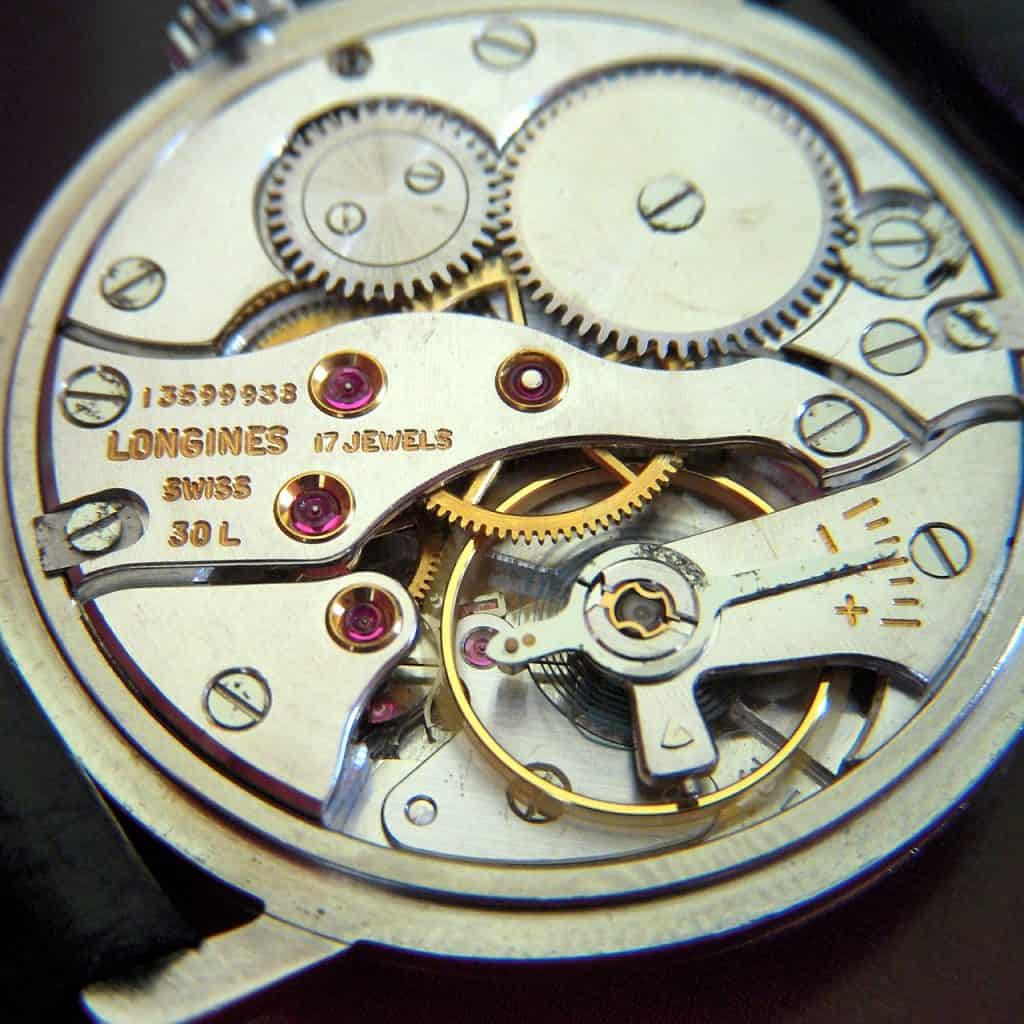
Creating your own movement is an extremely costly endeavor. It requires many hundreds of hours of research and development, so many brands instead opt to outsource this section.
There are huge companies built around creating these movements that gladly provide others with their movements. Brands like ETA, Ronda, and Miyota focus on producing these movements.
But when you buy a luxury watch, you expect the brand not to cut any corners.
Having an in-house movement also allows the watchmakers to become experts on that particular movement, allowing them to give you a better service. It also leads to incredible designs, like the insanely quiet tick of a Rolex watch.
The Watch Had To Be Hand Assembled
Luxury watches are all about quality, precision, and attention to detail. And all these high standards a luxury watch brand sets can only be met when you hand-assemble the watches.
Bulk manufacturing always comes with some defects, and the overall quality control just isn’t as good as when you hand-assemble something.
By hand-assembling every timepiece, the highest quality is guaranteed. The brand can follow the strict quality guidelines set in place, ensuring the product is top-notch.
It also makes it easier to incorporate complications. If everything is hand-assembled, those complex complications are easier to implement as the watchmaker knows every aspect of the watch in and out.
A few examples of complications are:
- Chronograph
- Moonphase
- Date window
- Annual calendar
- Perpetual calendar
- Tourbillon
- Power reserve
- Minute repeater
- Alarm
The reason these features are complications is quite literally because they make the watch more complicated.
Hand-assembling all watches also keeps the production rates low. This limits the supply, enhancing that luxury feel. But more on that later.
The Watch Must Include High-Quality Materials
The inclusion of high-end and exotic materials is a given in luxury watches. Materials like gold or platinum are already synonymous with luxury, so it makes sense that they’re incorporated in luxury watch designs.
Here’s a list of commonly used materials within luxury watches:
- Yellow Gold
- White Gold
- Rose Gold
- Diamonds
- Titanium
- Platinum
- Stainless Steel
- Ceramic
- Carbon Fiber
Now, it is important to note that not every luxury watch includes these types of materials. And some are more expensive and luxurious than others (i.e., gold is more luxurious than stainless steel), but the inclusion of these materials is expected from luxury watch brands as a whole, not per model.
After all, if you pay a couple of thousand dollars for a timepiece, would you be satisfied with a cheaply made plastic watch that scratches easily?
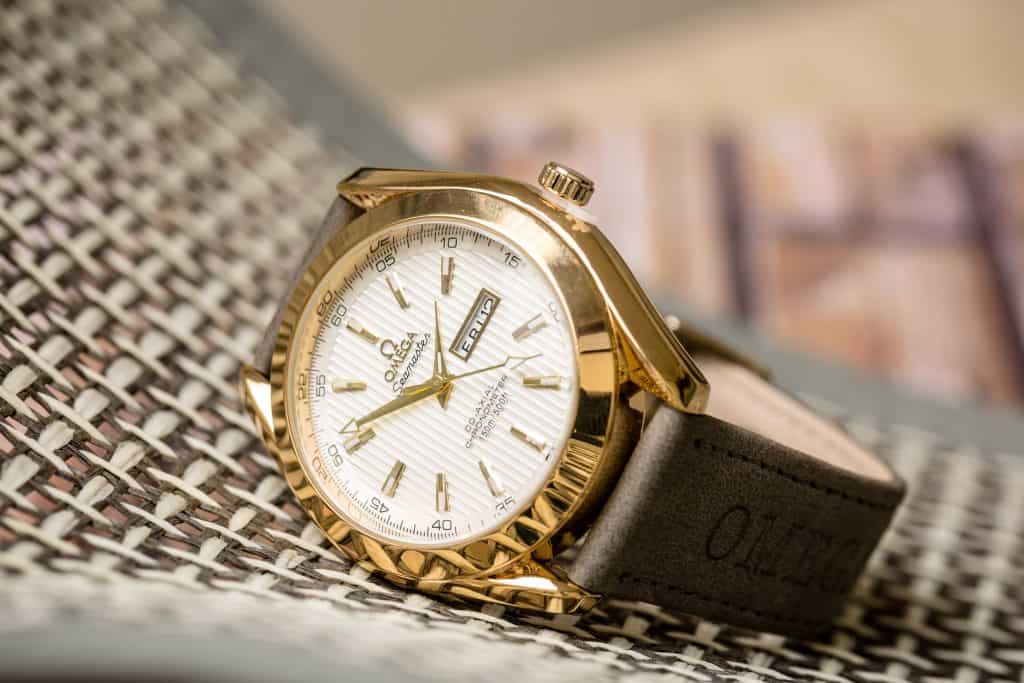
While the casing material can differ, the watch glass material is always the same.
It’s expected that every luxury watch comes with a sapphire crystal. This is the piece of glass that covers the watch’s face, and a sapphire crystal is, without a doubt, the best material for this.
A sapphire crystal can only be scratched by diamonds, ensuring your watch face always looks pristine.
Including these materials has no actual impact on how well a watch tells the time. They’re purely used to make the watch look better. To make the overall experience better. And that’s what luxury watch brands should provide (and they are!).
The Watch Must Be Exclusive
Lastly is exclusivity. This is another one of those factors that most people care about.
When you buy a luxury piece, you want that piece to stand out. The name behind it already does part of the job, but how does that name get its reputation in the first place?
It’s very simple.
Let’s take a brand like A. Lange & Söhne. This is a highly regarded luxury watch brand. Owning a Lange timepiece is a real treat.
And it is that way because the brand only makes around 5000 watches annually. That is not a lot, especially compared to the millions of timepieces a brand like Citizen produces.
Even if you can afford a Lange watch (which is already very expensive), it’s not necessarily a given that you can actually get it.
A low production rate (which is also a result of hand-assembling these timepieces) keeps the watches produced more exclusive, as there are fewer to sell.
On the other hand, exclusivity is also reached by setting the retail price high.
You already exclude a large portion of the population by pricing a watch in the thousands of dollars. Not everyone can just shell out $5000 for a watch. And out of all the people that can afford a watch like that, not all will think it’s worth it.
How Much Can You Expect To Pay For A Luxury Watch?
As discussed, luxury watches can be very expensive due to the materials used and the feeling of prestige it gives. But what can you expect to pay for a luxury watch?
Entry-level luxury watches cost over $1000 at minimum, while mid-level luxury watches set you back between $5000 and $50.000. There are also luxury watches that cost well over $100.000, sometimes even as high as a million dollars.
The cost of a luxury watch will, of course, be different per brand and per model. Most brands have more affordable, entry-level watches as well as some more expensive watches.
| Brand | Average Price Of Their Luxury Watches |
|---|---|
| Richard Mille | $141.171,18 |
| Patek Philippe | $54.132,55 |
| Audemars Piguet | $50,781 |
| Rolex | $12.390,56 |
| Omega | $5.992,16 |
| Tissot | $761,72 |
As you can see, even among luxury watches, there’s a huge price gap. Tissot watches, often described as the most affordable entry-level Swiss luxury watches, are actually very affordable.
Even Omega watches are on the more affordable side, especially when compared to the likes of Richard Mille. The average price of a Richard Mille watch is almost 24 times as much as the average price of an Omega.
You also have to keep in mind that these are averages. Rolex offers Oyster Perpetuals priced at $6.000, but they also sell DayDates for $40.000. Still, the table above indicates what you could expect to pay for a luxury watch from a particular brand.
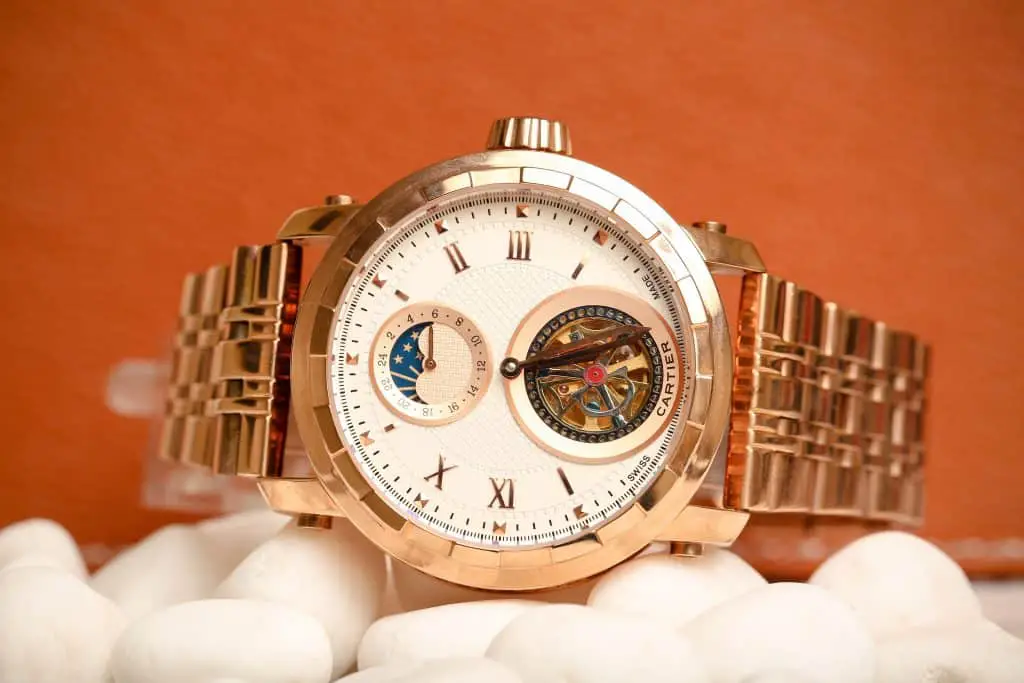
Why The Definition Is Different For Everyone
Luxury is different for everyone. For some, owning a watch is a luxury in and of itself. For others, a $5000 watch is another for the collection.
It’s no secret that some have it better than others. And this discrepancy leads to a wide variety of views on what ‘luxury’ even means.
For many people, a $1.000 watch is a true piece of luxury. After all, $1.000 is a lot of money, and you can buy some truly beautiful watches for that price.
But for others, that number starts at $5000 or even $15.000. There are even situations where people spend over half a million on a single timepiece. These are extreme prices, of course, but it paints the picture.
And that’s really why it’s so difficult to pinpoint what a luxury watch actually is. It will have a vastly different meaning for everyone.
We know that people tend to be more proud and content when they purchase a luxury timepiece (or luxury items in general). This is called ‘material happiness‘, and it effectively means that we feel more joy when we purchase luxurious items.
This is because the purchase of such an item becomes a special occasion. Luxury watch brands also play into this psychological happening by giving you a fantastic buying experience (i.e., Hublot serving champagne).
And personally, this is where I would get my definition of luxury. When do you get that proud and joyful feeling? Is that when you purchase a beautiful Seiko for $250? That’s absolutely fantastic.
You can still be extremely happy with a more affordable watch. There’s absolutely nothing wrong with being incredibly proud of that. A watch does not need to cost multiple thousands of dollars, nor does it need to meet every single guideline in order to feel ‘luxurious’.
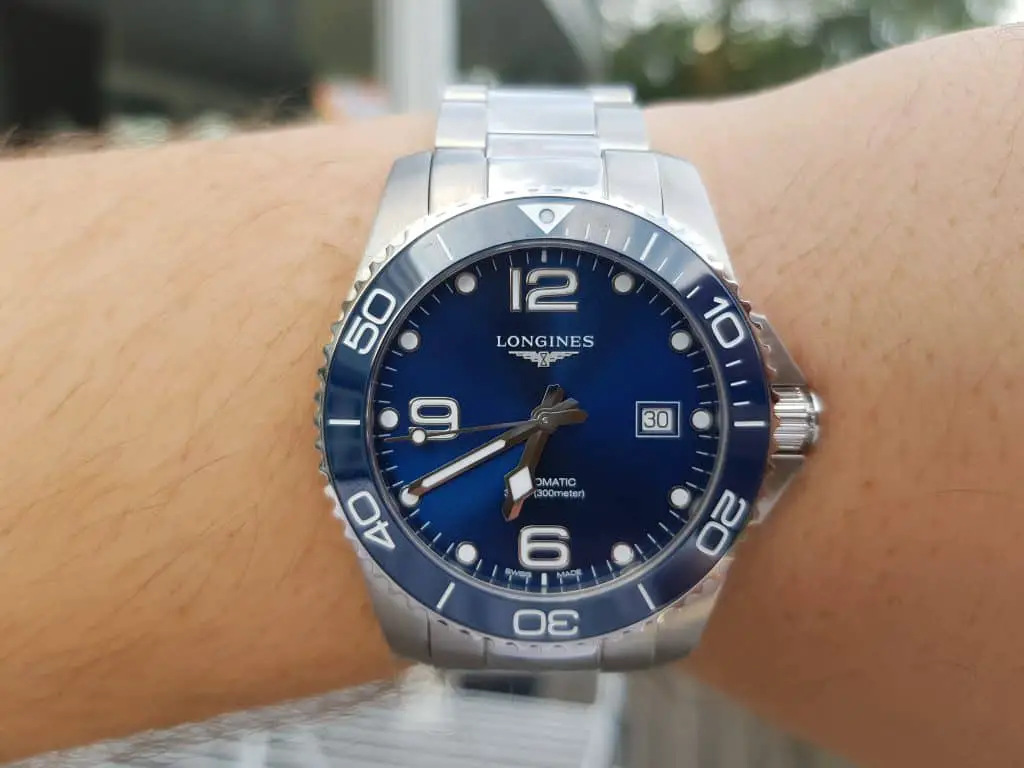
Is A Luxury Watch Worth It?
Whether or not a luxury watch is worth it entirely depends on you. There are arguments to be made from both sides, but in the end, if you don’t think a luxury watch is worth it, then it isn’t (and vice versa).
What we can say, though, is that luxury watches are typically of much, much higher quality. While some respected watchmakers produce stunning timepieces for affordable prices (think Seiko or Citizen), most affordable watch brands can’t even begin to compete with luxury timepieces.
We went over all the attention to detail that goes into a luxury watch; an in-house movement, luxurious materials, complications, and all hand-assembled.
Additionally, with luxury watch brands, you get an incredible buying experience, and the brand will look after you even after the purchase.
Most affordable watch brands simply mass-produce all of these in an assembly line.
Luxury watches are much more expertly crafted. But in the end, a luxury watch will tell the time just as well as an affordable quartz watch.
It comes down to whether you think it’s worth it or not. Spending $3000 or more on a watch is absurd to some, no matter how well off they are. In that case, a luxury watch is probably never worth it.
On the other hand, there are people out there saving every month to afford one of these timepieces. They appreciate the beauty and craftsmanship that goes into such a piece and think it’s worth the high price.
Whatever camp you’re in, always keep in mind that a watch is not worth going into debt over. If you do not have the money, either save or get it out of your mind. Going into debt over a watch is not worth it.
We wrote an entire article on how much you should spend on a watch that goes more in-depth on this, which you can read here.
Also, don’t buy a luxury watch just to impress others. Buy the watch because you love the watch. This isn’t a simple purchase. A couple of thousands of dollars is a lot of money. Make sure you actually like the watch and the brand behind it.
A good trick here is to wait a couple of weeks after identifying the watch you want. If you still really want the watch after those weeks, then it’s your sign to get it. If you lost interest, the watch probably wasn’t meant for you.
